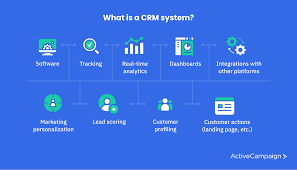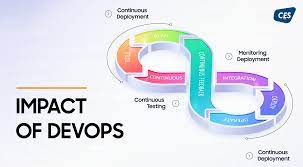The Power of a Client-Centric Approach
In today’s highly competitive business landscape, companies are increasingly recognizing the importance of adopting a client-centric approach. But what exactly does it mean to be client-centric, and why is it so crucial for success?
Understanding Client-Centricity
A client-centric approach revolves around putting the needs and preferences of clients at the forefront of all business decisions and actions. Rather than focusing solely on products or services, client-centric companies prioritize building strong relationships with their clients and delivering personalized experiences that exceed expectations.
The Benefits of Being Client-Centric
Embracing a client-centric mindset offers numerous benefits for businesses, including:
- Increased Customer Loyalty: By demonstrating a genuine interest in meeting clients’ needs, businesses can foster long-lasting relationships built on trust and loyalty.
- Enhanced Customer Satisfaction: Tailoring products and services to match individual client requirements leads to higher levels of satisfaction and positive feedback.
- Improved Brand Reputation: Client-centric companies are viewed as customer-focused and empathetic, enhancing their reputation in the market.
- Better Business Growth: Satisfied clients are more likely to become repeat customers and recommend the business to others, driving growth and profitability.
Implementing a Client-Centric Strategy
To truly embrace a client-centric approach, businesses must prioritize the following key elements:
- Active Listening: Understanding clients’ needs requires active listening and effective communication to gather valuable insights.
- Personalization: Tailoring products, services, and interactions to each client’s preferences enhances the overall experience.
- Ongoing Support: Providing continuous support and assistance demonstrates commitment to clients beyond initial transactions.
- Data-driven Decision Making: Utilizing data analytics to understand client behavior enables businesses to make informed decisions that benefit both parties.
In conclusion, adopting a client-centric approach is not just a trend but a fundamental strategy for sustainable business success. By prioritizing the needs of clients and building meaningful relationships, companies can differentiate themselves in the market and create lasting value for both their clients and themselves.
Understanding the Client-Centric Approach: Key Questions Answered
- What is a customer-centric approach?
- What are the key 4 steps on customer centricity?
- What are the three main approaches to customer centricity?
- How do you become client centric?
- What are the 4 C’s of consumer centricity?
- What are the 7 pillars of customer centricity?
- What is a client centric culture?
- What is the client centered approach?
What is a customer-centric approach?
A customer-centric approach refers to a business strategy that places the customer at the center of all operations and decision-making processes. It involves understanding and anticipating the needs, preferences, and expectations of customers to deliver personalized experiences that drive satisfaction and loyalty. By prioritizing the customer’s perspective and focusing on building strong relationships, businesses can create value that goes beyond individual transactions. Ultimately, a customer-centric approach is about fostering trust, enhancing engagement, and consistently exceeding customer expectations to drive long-term success and sustainable growth.
What are the key 4 steps on customer centricity?
Customer centricity is a strategic approach that places the customer at the core of business operations. The key four steps to achieving customer centricity are understanding customer needs and preferences through active listening and data analysis, personalizing products and services to meet individual customer requirements, providing ongoing support and engagement to build long-lasting relationships, and continuously refining strategies based on customer feedback to ensure alignment with evolving needs and expectations. By following these steps, businesses can cultivate a customer-centric culture that drives loyalty, satisfaction, and sustainable growth.
What are the three main approaches to customer centricity?
When considering the three main approaches to customer centricity, businesses often focus on personalized interactions, proactive engagement, and continuous feedback. Personalized interactions involve tailoring products and services to meet individual customer needs, creating a more engaging and relevant experience. Proactive engagement emphasizes anticipating and addressing customer needs before they arise, demonstrating a commitment to proactive service delivery. Continuous feedback involves actively seeking and incorporating customer input to improve products, services, and overall customer experience, fostering a culture of ongoing improvement based on real-time insights. By embracing these approaches, businesses can enhance their customer-centric strategies and build stronger relationships with their clients.
How do you become client centric?
To become client-centric, businesses must shift their focus from solely offering products or services to prioritizing the needs and preferences of their clients. This transformation involves actively listening to clients, understanding their unique requirements, and delivering personalized experiences that exceed expectations. Embracing a client-centric approach also requires ongoing support, data-driven decision-making, and a commitment to building long-lasting relationships based on trust and mutual benefit. By consistently putting clients at the center of all business decisions and actions, companies can cultivate loyalty, enhance satisfaction levels, and differentiate themselves in the market.
What are the 4 C’s of consumer centricity?
The 4 C’s of consumer centricity are a framework that emphasizes key principles for businesses to adopt a client-centric approach. These include Customer Understanding, Customer Convenience, Customer Collaboration, and Customer Care. Customer Understanding involves gaining deep insights into the needs and preferences of clients to tailor products and services accordingly. Customer Convenience focuses on making interactions and transactions seamless and hassle-free for clients. Customer Collaboration encourages building strong relationships with clients through active engagement and feedback. Finally, Customer Care underscores the importance of providing exceptional support and service to ensure client satisfaction and loyalty. By focusing on these 4 C’s, businesses can effectively prioritize their clients’ needs and enhance their overall experience.
What are the 7 pillars of customer centricity?
In the context of a client-centric approach, the concept of the “7 pillars of customer centricity” refers to the foundational principles that guide businesses in putting their clients at the center of their operations. These pillars typically include elements such as customer understanding, personalization, seamless experiences, proactive communication, continuous improvement, employee empowerment, and organizational alignment. By focusing on these key pillars, businesses can cultivate strong relationships with their clients, anticipate and meet their needs effectively, and create a culture of customer-centricity that drives long-term success and loyalty.
What is a client centric culture?
A client-centric culture refers to an organizational environment where the needs, preferences, and satisfaction of clients are at the core of every decision and action taken by the company. It goes beyond simply providing products or services to focusing on building strong relationships with clients, understanding their individual requirements, and delivering personalized experiences that exceed expectations. In a client-centric culture, all employees across the organization are aligned towards putting clients first, actively listening to their feedback, and continuously striving to enhance the overall client experience. This approach fosters loyalty, trust, and long-term partnerships with clients, ultimately driving business growth and success.
What is the client centered approach?
The client-centered approach is a business strategy that places the client at the core of all operations and decision-making processes. It involves understanding and addressing the unique needs, preferences, and expectations of clients to provide personalized and tailored solutions. By prioritizing open communication, active listening, and empathy, businesses can cultivate strong relationships with their clients based on trust and mutual respect. The client-centered approach goes beyond simply delivering products or services; it aims to create meaningful experiences that exceed client expectations and foster long-term loyalty.




